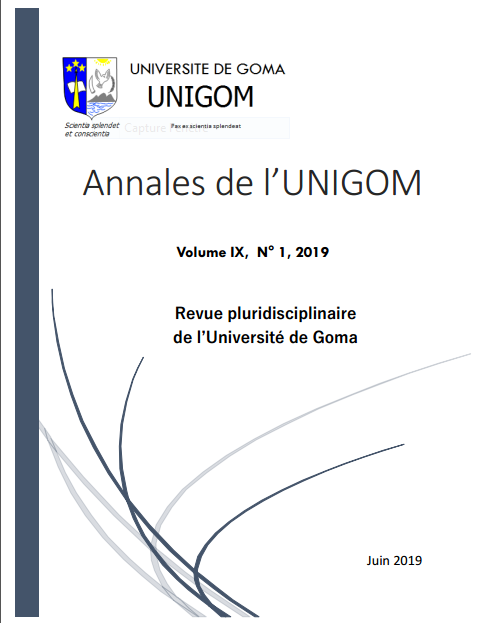Effets comparés de l’utilisation de NPK sur le sorgho entre zones pluvieuse et aride au Burkina Faso
Contenu principal de l'article
Résumé
Résumé
L’objet principal de ce travail est de comparer les effets de l’utilisation du NPK dans la culture du sorgho entre zones pluvieuse et aride au Burkina Faso. Cet article a utilisé les modèles Probit et Heckman à deux étapes pour analyser les déterminants des décisions d'adoption et d'intensification de l'utilisation de NPK dans la production du sorgho dans la zone pluvieuse et aride au Burkina Faso. Les résultats issus du modèle Probit révèlent que la traction animale, le revenu non agricole, la distance par rapport à une route bitumée et la quantité des semences expliquent l’adoption de NPK dans la zone pluvieuse ; l’âge du chef de ménage influence l’adoption de NPK dans la zone aride ; la taille de champ et l’appartenance à une organisation de producteurs affectent l’adoption de NPK dans les deux zones. Les résultats du modèle de Heckman à deux étapes indiquent que la taille de champs, le fait d’être homme et le TLU influencent l’intensité de NPK dans la zone pluvieuse ; la traction animale, la possession d’une radio et le pourcentage de travailleuses femmes dans le ménage expliquent l’intensité de NPK dans la zone aride. Ces résultats impliquent que les politiques d’incitation à l’adoption devraient songer aux prêts directs de la traction animale dans la zone pluvieuse alors que dans la zone aride, les autorités pourraient appliquer un système de prix non linéaire croissant pour la vente de NPK.
Abstract
The main objective of this work is to compare the effect of NPK adoption in sorghum cultivation between the rainy and arid zone in Burkina Faso.This article used the Probit and the two-step Heckman models to analyze the determinants of decisions to adopt and intensify the use of NPK in sorghum production in the rainy and arid zone of Burkina Faso. Results from the Probit model show that animal traction, non-agricultural income, distance from a paved road and seed quantity explain the adoption of NPK in the rainy zone; the age of the head of the household influences the adoption of NPK in the arid zone; size of field and membership in a producer organization affect the adoption of NPK in both zones.Results from the two-step Heckman model indicate that field size, the fact of being man and TLU influence NPK intensity in the rainy zone; animal traction, possession of a radio and the percentage of women working in the household explain the intensity of NPK in the arid zone. These results imply that Policies to encourage adoption should consider direct loans for animal traction in the rainy zone, while in the arid zone the authorities could apply a growing non-linear price system for the sale of NPK.
